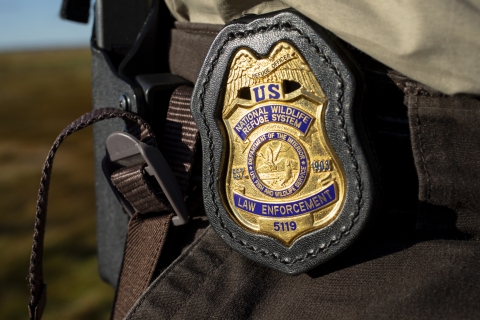What We Do
The National Wildlife Refuge System is a series of lands and waters owned and managed by the U.S. Fish and Wildlife Service. Wildlife conservation is at the heart of the refuge system. It drives everything we do from the purpose a refuge is established, to the recreational activities offered there, to the resource management tools we use. Selecting the right tools helps us ensure the survival of local plants and animals and helps fulfill the purpose of the refuge.
Management and Conservation
Refuges use a wide range of land management tools based on the best science available. Some refuges use prescribed fires to mimic natural fires that would have cleared old vegetation from the land helping native plants regenerate and local wildlife to thrive. Other refuges contain Wilderness areas where land is largely managed in passively. The management tools used are aimed at ensuring a balanced conservation approach where both wildlife and people will benefit.
Our goal is to conserve, enhance and restore native forest, riparian riparian
Definition of riparian habitat or riparian areas.
Learn more about riparian , stream and wetland habitats and the fish, wildlife and plants that live here. We use fire, forest and weed management to meet this goal.
The forests of northeast Washington are fire-adapted ecosystems. The tree, shrub, forb and grass species present here developed adaptations that allow them to not only survive fire but to thrive with fire.
Beginning in the early 1900’s, fire suppression policies resulted in flammable vegetation and woody debris accumulating, compromising forest health and increasing the intensity of natural fires. Forests became overcrowded with small trees, fuels built up and shade tolerant species expanded. The buildup of forest litter, brush and younger trees creates ladder fuels which enables fire to reach mature, older tree tops more readily. When fire has easier access to tree crowns, fire control is more difficult and dangerous and more trees are killed.
Prescribed fire is used as a tool for the re-introduction of fire into our forests, leaving them less susceptible to devastating wildfires. Carefully planned prescribed fire conserves, protects and enhances fish, wildlife, plants and their habitats while protecting refuge facilities, neighboring lands and surrounding communities.
We use silviculture, the art and science of managing forests, to provide wildlife habitats that are missing from the surrounding landscape. Commercial thinning (removing selected trees that have value as lumber products) and non-commercial thinning (removing trees too small to be processed into wood products) reduces competition between the remaining trees for sunlight, water and other nutrients. After thinning, the residual fuels, or slash, may be stacked into piles and burned. The benefits of thinning include: reducing the threat of large wildfires; increasing protection for surrounding homes and property; reducing stand density, canopy closure, ladder fuels and fuels on the forest floor; and recycling nutrients into the soil.
Western white pine was once a primary component of the forests of the Refuge. However, due to deaths from the accidentally introduced fungus- white pine blister rust- more than 95% of Western white pine trees have died in the last 75 years. The Refuge is working to restore these trees to a place in the ecosystem by encouraging the remaining western white pine and planting blister rust resistant seedlings.
Early settlers cleared suitable sites to create fields for growing crops and raising livestock. We maintain many of those open areas with fire and mowing to provide habitat for native grassland species.
Invasive plant management, including European water milfoil in the lakes, is a continuing challenge.
Law Enforcement
U.S. Fish and Wildlife Service law enforcement officers have a wide variety of duties and responsibilities. Officers help visitors understand and obey wildlife protection laws. They work closely with state and local government offices to enforce federal, state and refuge hunting regulations that protect migratory birds and other game species from illegal take and preserve legitimate hunting opportunities.
Laws and Regulations
Visit our Rules and Policies page to learn more about hunting, fishing, and general visit rules.

